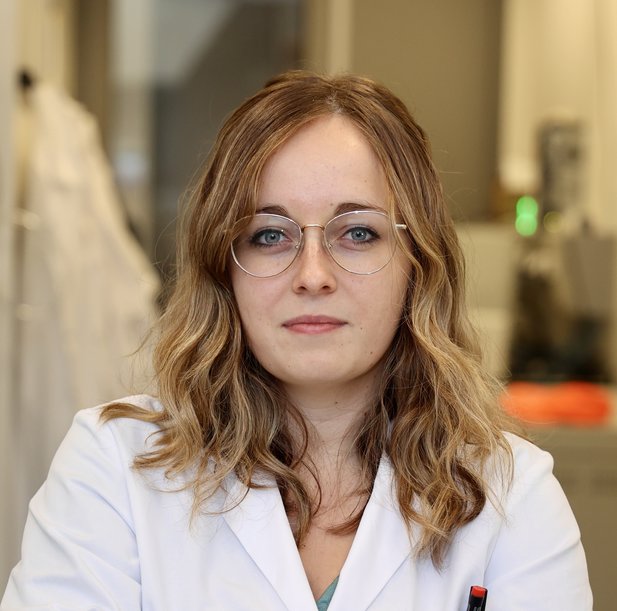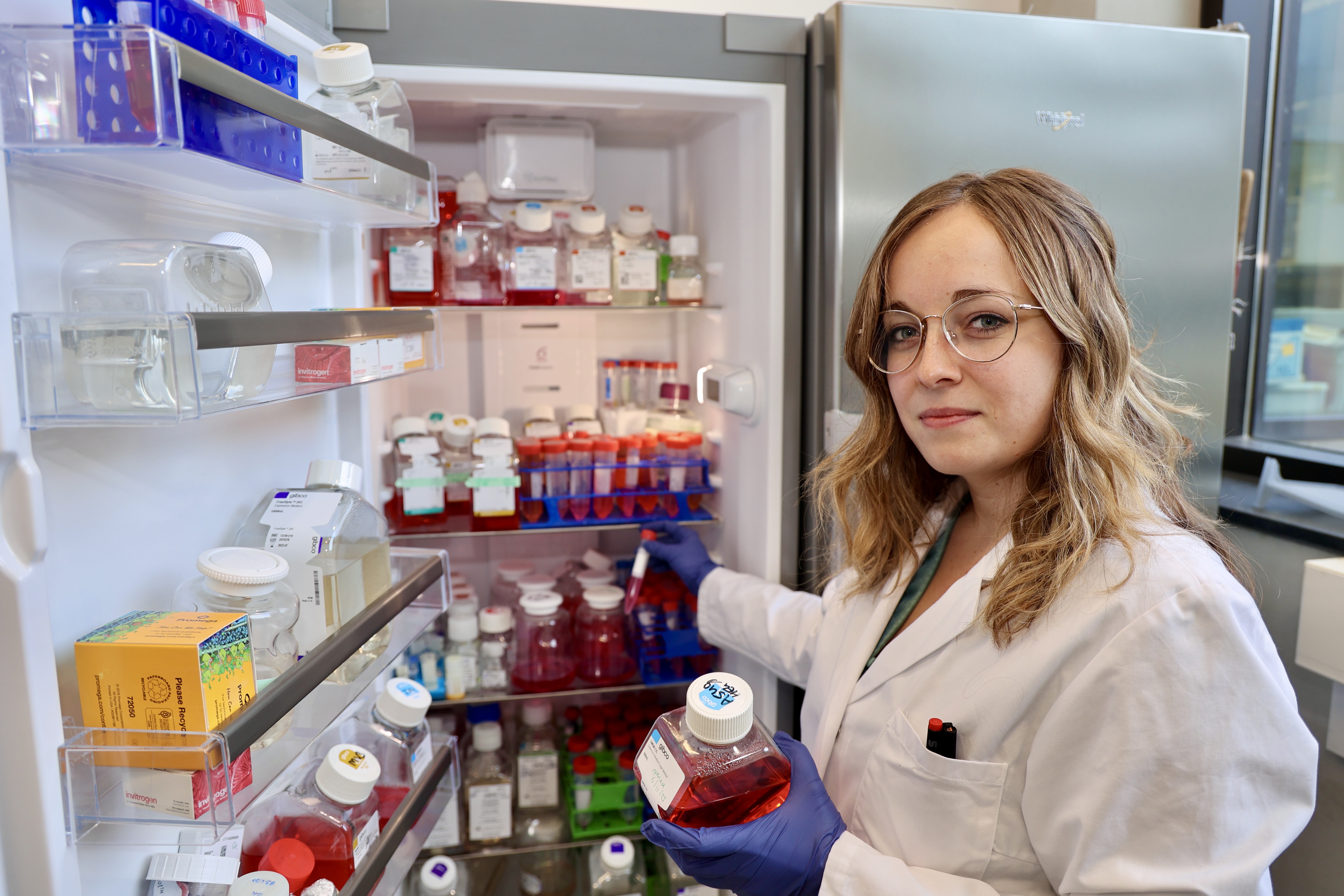Anouk van der Net
What exactly do you do at the cutting edge of technology and healthcare?
Following on from my Master's degree in Biomedical Engineering, I am very interested in how cells make choices: how they are influenced by their environment and how they themselves influence their environment. In the context of a disease like cancer, this is highly relevant.
Cancer cells are more successful in forming metastases when they migrate in a group. Through my research, I would like to find out why they are so effective at doing this. Biologists look at molecular properties. We look biophysically, at the firmness and flexibility of cells. How stiff are they? Do they modify their stiffness in a soft environment? And what do they do when they have to go through a narrow passage?
We examine clumps of cancer cells, looking specifically at the cytoskeleton - a flexible and dynamic skeleton of the cell. They use this to become deformed, and to adhere to each other and to protein filaments in their environment. On two-dimensional microfluidic chips we give the cells challenges such as narrow passages. And in hydrogels we do this in 3D, which resembles more accurately what happens inside the body. By analysing microscope images, we ultimately want to calculate what kind of forces take place at the microscopic level.
My health ambassador Gijsje Koenderink is also my supervisor. She takes a very wide-ranging look at how the cytoskeleton gets its physical properties. At the cellular level, I look at how connections between elements of the cytoskeleton form and how that is relevant to medical applications. In my case cancer, but it could also be fibrosis, for example.

What is your impression of the medical world?
It’s very special to work on a disease that so many people experience at first hand, either personally or among those around them. It’s easy to forget that sometimes, because I mainly work in a lab. But whenever I give a talk to medics, I get a strong sense of ‘working together for a solution’. However, they do view things from a very different perspective. Even when I adjust my presentations accordingly, I find that my basic research is still far removed from the research that doctor-researchers are used to.
I already have ideas for applying my models to patient material in due course. That is quite difficult to arrange at TU Delft because of biosafety rules, so I will have to work much more directly with medics. I’m very much looking forward to doing so.
Do you have a top tip for engineers who work in the medical field, or who would like to do so?
Because you work at a cutting edge, it is difficult for people to understand exactly where your knowledge lies. Particularly if you want to collaborate with different disciplines, it is helpful if you are able to explain clearly what you do, what your role is.
Also think carefully about what research you would like to do and whether you are in the right place for it. My research focuses more on the physical part of biophysics, but it certainly has a biological component as well. That being the case, it is important to be able to involve people from other relevant fields. TU Delft has set up various collaboration agreements to that end.
Biologists look at molecular properties. We look biophysically at the firmness and flexibility of the cell.
